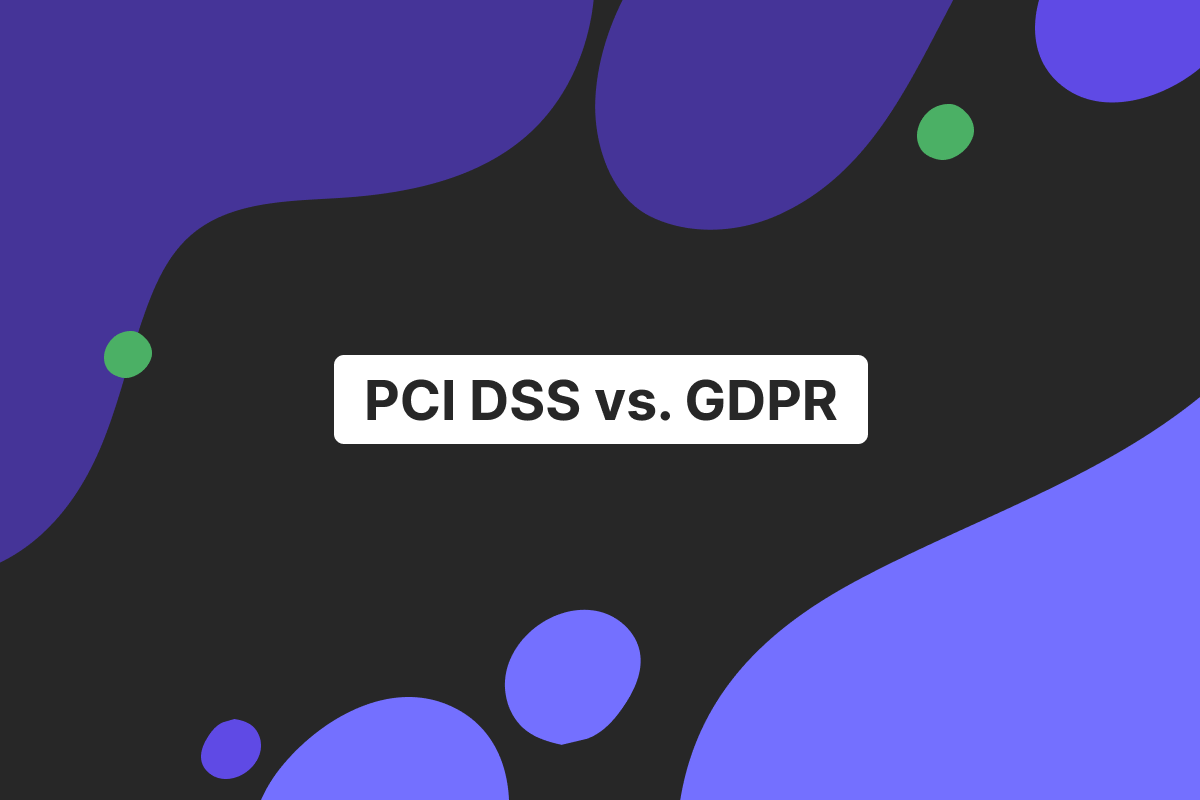The article was updated on 10.12.2024
There are so many kinds of money transfer options worldwide that not even financial experts can name all of them on the spot. However, in many cases, various payment types are grouped by common purposes or other metrics.
It is where cross-border payments come into place, as a number of payment and transfer options can be classified as such.
In this article, Genome explains what a cross-border payment method is and provides cross-border transaction examples so you can select the option that suits you the most. We also explore the advancements and improvements in cross-border payments.
What are cross-border payments?
Cross-border transfers are a method of sending funds during which the sender and the beneficiary are located in two different countries.
Cross-border transactions can occur between different entities. For instance, your friend from Munich can send you funds while you are visiting Prague. Same with cross-border B2B payments: a UK business can transfer funds to a logistics company in Croatia. And, of course, a merchant in Italy can accept payments from clients all over Europe using this preferred payment method.
Let’s use Genome and take a look at cross-border transaction examples. The first right payment method that comes to mind is SWIFT international transfers. For instance, if you live in Berlin, you can send funds to someone in Australia, and it will be considered a cross-border transfer.
SEPA payments can also be cross-border, but it depends on the situation. For example, a SEPA transfer from Turin (Italy) to Córdoba (Spain) is classified as such. At the same time, a transaction between Odense and Copenhagen is not a cross-border transfer, as both are situated in Denmark.
Now, let’s look at an example within Genome that is the opposite of cross-border transfers: Faster Payments. You see, such transfers are only made within the United Kingdom and, thus, are not a cross-border payment method.
As you can see, many money transfer types can embody the idea of cross-border payments. So, here are the payment methods commonly used for cross-border transfers:
International wire transfers;
Electronic funds transfers;
Payments made with debit, credit, and prepaid cards;
Mobile payments/mobile wallets;
Buy now, pay later;
Digital currencies;
And many more…
Open an account
in Genome online
How do cross-border payments work?
Let’s review some common ways of making cross-border payments to better understand how they occur. The first example is SWIFT bank transfers.
Imagine you live in Florence, Italy. One of your family members traveled to Latin America, and asked that you send them money. Here’s what you need to do:
Go to your banking app and open the menu that has a transfer feature.
Select the SWIFT transfer option;
To use a SWIFT cross-border payment method, you must provide the following details about the beneficiary: their name, account number or IBAN, SWIFT code, beneficiary’s country, city, and address (optional).
Enter the payment amount and description to send a banking transfer.
After that, the cross-border transfer message is formed, and your bank exchanges it with the recipient’s financial institutions. But, this will only happen if the two payment providers have a direct relationship. If not, the correspondent banks will be used to exchange money transfer instructions. The more intermediaries are involved, the longer your cross-border payment will take to reach the beneficiary.
Let’s also review how cross-border payment methods work for merchants with another example.
For instance, you want to establish an e-commerce business in Léon, France. By analyzing your potential customers and the target market, you conclude that you can potentially get clients from multiple European and other countries and have many revenue streams. So, for this purpose, you need to find a financial institution with a merchant account that will allow you to accept cross-border transactions in various currencies. Having the right payment methods and local transfer options will also be crucial if the company wants to conquer the global marketplace.
Then, you find a cross-border payment solution that can provide such services and start a merchant account. And the rest is history! Clients will make cross-border payments using the different currencies involved, and you will be getting them to your merchant account, enjoying the increased revenue. After a certain period (usually three days to a week), the funds will be settled into your bank accounts, and you can start using them.
Challenges in traditional cross-border payments
One of the most significant issues is the fees and other types of charges associated with international payments. Traditional banks operate on a global scale, which factors into the costs of such payments. They are reliable, no doubt; we can even talk about them as the core of the global payment ecosystem, especially if other currencies are involved – but this comes at a price.
Another major concern would be payment delays because cross-border payments have some regulatory requirements. Additionally, with some cross-border payment methods, the transfer has to go through multiple financial institutions, leading to processing times of up to several days. Such delays may disrupt payment flows and create some inconveniences, preventing businesses from exploring new markets.
Unclear exchange rates and hidden fees are also big factors that can deter you from making cross-border payments. The final cost of cross-border transfers can be inflated due to markups or undisclosed charges. This is especially true when you have to deal with multiple currencies in cross-border payments.
Lack of transparency makes it difficult for businesses to calculate expenses, especially with large transactions or very frequent payments in our global economy. Any of these challenges may lead to reducing the revenue stream of any company.
Modern advancements in cross-border payments
As we established previously, traditional cross-border payments face issues, especially when it comes to speed. However, modern banks and financial providers come up with new approaches to this payment method. Streamlined solutions are being developed to enhance cross-border payments when it comes to speed, accessibility, and transfer costs.
For instance, remember that we mentioned SEPA as a viable cross-border payment option? Modern financial institutions, like Genome, also offer SEPA Instant Transfers that allow you to send and receive euro payments across the SEPA zone within seconds.
Another innovation that reshaped the bank transfer industry was blockchain technology. By decentralizing payment systems, blockchain ensures cross-border payments are processed securely and almost instantaneously. It became possible because no intermediary banks were involved in the process. Even if blockchain-based cryptocurrencies face regulatory resistance in some countries, they can still offer lower fees and enhanced transparency.
Real-time transaction capabilities amplify the impact of these advancements on international trade and the global market. The ability to instantly send and receive payments across different regions and borders reduces operation costs and improves cash flow management and revenue stream overall. Shifting from traditional banks may be a real competitive advantage in new markets.
Genome’s cross-border payment methods
Genome provides cross-border payments and multiple other financial services you need in your day-to-day errands. You can start personal and business wallets with multiple accounts available in different currencies: EUR, USD, GBP, PLN, CHF, JPY, CAD, CZK, HUF, SEK, and AUD.
Dedicated IBANs
Once you start any type of wallet inside Genome, you get a dedicated IBAN account right away! This euro IBAN account is your gateway to all other Genome services, including domestic payments and money transfers!
Efficient international transfers
Genome offers a couple of options when it comes to cross-border payments. First and foremost, we have SEPA transfers that allow you to send money to any country within the SEPA zone. More importantly, we recently introduced SEPA instant payments – using these, all our clients can send and receive euro payments within seconds!
Additionally, we offer international money transfers for our business wallet users. Just check if you’re eligible for these cross-border payments and access SWIFT transfers and more! Genome makes sure to reroute your international payment via the most efficient and cost-effective transfer option so your company can save time and money!
Competitive currency exchange
Genome is always transparent when it comes to our pricing and fees. You can always check the current currency exchange rates on our website. The exchange rates are also displayed when you make a payment via Genome!
Open an account
in Genome online
Best practices for handling cross-border payments
Businesses should prioritize some aspects over others to select the best option for cross-border transfers. Here are the key criteria to consider when selecting cross-border payment services:
Pricing. The best financial institutions are the ones that have transparent pricing structures in addition to competitive rates. Hidden fees, high transaction costs, or marked-up exchange rates can erode profits.
Speed and reliability. Efficient cross-border payment systems should offer fast processing times to minimize delays in cash flow. Providers that support real-time financial transactions regardless of payment methods ensure businesses can meet their financial obligations promptly.
Safe payments. A reliable provider should offer robust encryption and fraud detection systems to safeguard sensitive financial data and protect transactions from cyber threats.
Easy integration. Sometimes, a good payment system may be very difficult to implement. Consider platforms that integrate seamlessly with your existing systems and have demo calls and customer support to help.
Global access. Cross-border payments imply that you need to send funds to different countries. So, naturally, your business will require a financial provider who supports multiple currencies for international transfers and can reach other countries.
Compliance and regulations. Another point is understanding global financial regulations, which is crucial when selecting a provider. Cross-border payments are subject to stringent compliance requirements, such as AML (Anti-Money Laundering) and KYC (Know Your Customer) regulations. Thus, a bank must have all the instruments in place to follow the regulatory requirements.
Conclusion
The global payments ecosystem has begun transforming, driven by advancements in fintech and digital solutions. Key innovations such as real-time payment processing and blockchain technology fix long-standing issues like delays and high fees. Such changes accelerate global markets and marketplaces, shaping a new global payment method that allows individuals and companies to send and accept payments from different countries more efficiently.
Open an account
in Genome online
FAQs
Why are traditional cross-border payments costly?
Traditional cross-border payments often use the SWIFT system. This, in turn, means that those transfers can potentially go through multiple intermediaries and currency exchange operations. This is what causes additional fees, which add up to the costs.
How do digital platforms improve cross-border payments?
To have leverage over traditional cross-border payments, digital platforms usually offer direct, automated international transactions, reducing reliance on intermediaries and allowing businesses to explore new markets. Alternatives are also possible. For instance, Genome provides SEPA Instant Transfers, allowing quick payments between 36 countries within the SEPA zone.
What role does blockchain play in cross-border payments?
Blockchain facilitates faster, more secure, and transparent cross-border payments by eliminating intermediaries. Its decentralized ledger technology ensures immutable records, real-time tracking, and reduced fraud risk. Blockchain significantly lowers costs and enables efficient settlements, even across different regions and international markets.
What are real-time payments?
The term “real-time” payments usually refers to money transfer options that allow you to send and receive funds instantly or within a couple of minutes or seconds.
How can businesses reduce costs in cross-border transactions?
Businesses can reduce the costs of cross-border payments by using fintech solutions that offer alternatives to traditional cross-border payments. However, this is not always ideal, as not all fintechs work with different types of businesses, and the same can be said about traditional banks. Alternatively, a company can group its clients by regions and revenue streams and use different cross-border payments to minimize costs, especially if they operate on a global scale.






